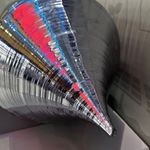- JMP will suspend normal business operations for our Winter Holiday beginning on Wednesday, Dec. 24, 2025, at 5:00 p.m. ET (2:00 p.m. ET for JMP Accounts Receivable).
Regular business hours will resume at 9:00 a.m. EST on Friday, Jan. 2, 2026. - We’re retiring the File Exchange at the end of this year. The JMP Marketplace is now your destination for add-ins and extensions.
- Subscribe to RSS Feed
- Mark Topic as New
- Mark Topic as Read
- Float this Topic for Current User
- Bookmark
- Subscribe
- Mute
- Printer Friendly Page
Discussions
Solve problems, and share tips and tricks with other JMP users.- JMP User Community
- :
- Discussions
- :
- Issue with heatmap saved as PDF (or HTML) from a journal in JMP16 (works fine in...
- Mark as New
- Bookmark
- Subscribe
- Mute
- Subscribe to RSS Feed
- Get Direct Link
- Report Inappropriate Content
Issue with heatmap saved as PDF (or HTML) from a journal in JMP16 (works fine in JMP13).
I am evaluating JMP 16 for my work to test if we could upgrade from JMP13.
The function below (written on JMP13) takes values from the test data table column "colName" with measured parameter name "paraName" and plots a heatmap using WaferXCordinate and :WaferYCordinate columns also in the same data table.
Names Default To Here (1);
getHeatMap = Function({paraName, colName}, {distHeatMap},
New Window(""||paraName||" Distribution",
Graph Builder(
Size( 534,580 ),Show Control Panel( 0 ),
Variables( X( :WaferXCordinate ), Y( :WaferYCordinate ), Group X( :Wafer ), Color(As Column (colName))),
Elements( Points( X, Y, Legend( 8 ) ) ),
SendToReport(
Dispatch(
{},
"400",
ScaleBox,
{Legend Model(
8,
Properties(
0,
{gradient(
{Label Format( "Fixed Dec", 15, 3 ), Range Type( "Middle 90%" ), N Labels( 9 )}
)}
)
)}
),
Dispatch( {}, "graph title", TextEditBox, {Set Text( colName )} )
)
)
);
return(distHeatMap);
);
When the generated heatmap is sent to the journal the heatmap looks as below in JMP13 (left) and JMP16 (right) and is as expected (top row in attached picture).
However, when the journal is saved as PDF (or HTML), the heatmap looks as below in JMP13 (left) and JMP16 (right) in bottom row of attached picture. JMP16 case is not as expected. The PDF settings are as default (changing the PDF settings does not help). My axes labels are set as bold in JMP13 preferences, hence showing for JMP13. Where am I going wrong with JMP16?
(also why is WaferYcordinate is showing in the legend on JMP16?)
Edit - Picture removed. Please wait for updated picture. I am working on it :)
- Mark as New
- Bookmark
- Subscribe
- Mute
- Subscribe to RSS Feed
- Get Direct Link
- Report Inappropriate Content
Re: Issue with heatmap saved as PDF (or HTML) from a journal in JMP16 (works fine in JMP13).
Hi Neo,
The output looks like the kind of sampling that happens for some interactive actions like scrolling an axis, where JMP only draws a sample of the points to stay responsive. Maybe there is a problem with JMP thinking your mouse is active. Not sure what would have changed since JMP 13 -- maybe the timing of the mouse events.
How are you doing the save? And can you try saving via script to see if it makes a difference?
Current Journal() << Save PDF( "$TEMP/wafer.pdf" );
Open( "$TEMP/wafer.pdf" );
- Mark as New
- Bookmark
- Subscribe
- Mute
- Subscribe to RSS Feed
- Get Direct Link
- Report Inappropriate Content
Re: Issue with heatmap saved as PDF (or HTML) from a journal in JMP16 (works fine in JMP13).
@XanGregg Thanks.
I have tried saving both via a script and manually and in both PDF and HTML. The issue remains.
I have tried doing it multiple times and with various different settings for PDF (so it is unlikely that the issue is related to mouse events) and the issue remains.
- Mark as New
- Bookmark
- Subscribe
- Mute
- Subscribe to RSS Feed
- Get Direct Link
- Report Inappropriate Content
Re: Issue with heatmap saved as PDF (or HTML) from a journal in JMP16 (works fine in JMP13).
Would it be possible for you to post the two journals? I would be very interested in trying to recreate the problem. The only issue that we have recreated so far is the mouse event issue Xan mentioned. It is possible that once the mouse event problem occurs it will continue to limit points in pdf and html files until you restart jmp or click on a graph to clear the click state so even saving via script and manually could still show the problem. I noticed that your 16.1 image of the journal might have had a little bit more white space than 13.2.1 image and that would be consistent with the mouse event problem also.
- Mark as New
- Bookmark
- Subscribe
- Mute
- Subscribe to RSS Feed
- Get Direct Link
- Report Inappropriate Content
Re: Issue with heatmap saved as PDF (or HTML) from a journal in JMP16 (works fine in JMP13).
I may not be able to share the exact same data. I will try to reproduce the issue with dummy data and post as soon as I have it ready.
Recommended Articles
- © 2025 JMP Statistical Discovery LLC. All Rights Reserved.
- Terms of Use
- Privacy Statement
- Contact Us

